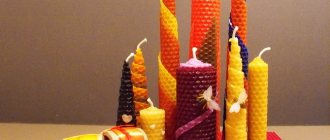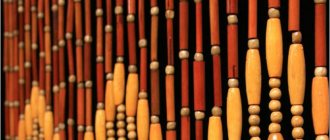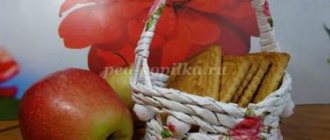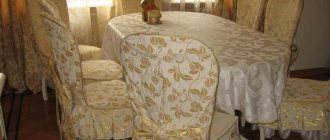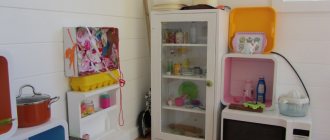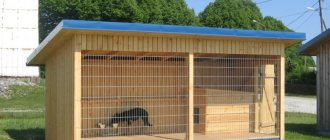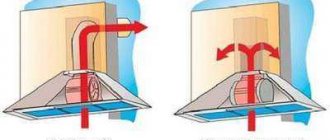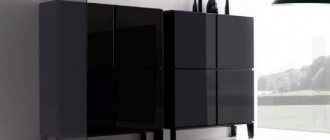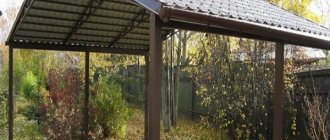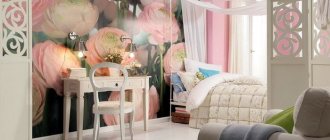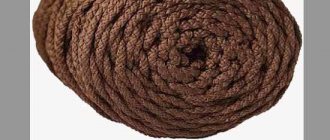Even expensive or fashionable things cannot replace handmade items. They may not be as professional, but they will contain a piece of your love. Nowadays there are many types of needlework and techniques. One of the popular ones is decoupage. This is a special method of decoration that creates a painting effect on the surface. Decoupage has a long history. With its help, back in the 12th century, the most skilled craftsmen created masterpieces.
Decoupage allows you to turn any, even the simplest objects or surfaces into original and unforgettable. Using the technique, you can decorate small boxes and bulky furniture, both wooden and glass, plastic, paper or fabric surfaces.
The basics of decoupage are simple - it is an applique that is made from decoupage cards, special or regular napkins with beautiful images, labels, postcards, fabrics with drawings and more. To work you will need some materials and tools.
Materials for decoupage
- Glue . You can use special glue designed for decoupage or PVA.
- Primer . It will be necessary when performing decoupage on wood. The substance will prevent the paint from being absorbed into the wooden surface. A construction acrylic primer is suitable for these purposes. To level the surfaces, you should get acrylic putty. This can be found in hardware stores. On other surfaces, such as a primer for decoupage, use white acrylic paint or PVA.
- Brushes . Needed for applying glue, paint and varnish. It is better to choose flat and synthetic brushes, as natural ones fade. Their size may vary depending on what kind of work you will be doing, but No. 10, 8 and 2 are most often used.
- Paints . Useful for decorating the background, drawing details and creating effects. It is better to use acrylic ones. They come in many colors and fit on different surfaces. The paints are water-soluble, so they can be washed off with water before they dry. To obtain translucent shades, thinners are added to them. As an alternative to acrylic paints, you can purchase simple white water-based paint and pigment colors for it.
- Blanks for decoupage . Everything is limited by your imagination. You can use bottles, trays, wooden boxes, flower pots, vases, frames, mirrors and lampshades.
- Varnish . Needed to protect items from external factors. The object is coated with varnish at the initial stage of work and at the end. For decoupage it is better to use alkyd or acrylic varnishes. For the finishing coat it is convenient to use aerosol varnish, which is sold in automotive stores. But to create craquelure you will have to purchase a special varnish.
- Scissors . In order not to spoil the picture, it is worth choosing sharpened scissors with gently moving blades.
- Auxiliary tools . To simplify the work, you should get a sponge, which is useful for painting large surfaces. They will also help create different effects. A roller will be convenient for gluing large or dense pictures. You may need toothpicks, cotton swabs, a toothbrush, masking tape, sandpaper, and a hair dryer to quickly dry paint or varnish.
Preparatory work for decoupage furniture
First, we need to treat the surface of the product. For the decoupage itself, this does not really matter; you can do it yourself and without additional processing of the base. In our case, we paint one surface and cover the other with stain. It turns out to be quite a contrasting ratio. However, these tones will ideally match the decoupage cards we have selected.
Helpful advice!
If your product is small and you use artistic paints, do not forget to degrease the surface. This is necessary for better application of the colorful word. Artistic paints do not like greasy stains and marks, unlike ordinary finishing paints. Take this into account to make your product high quality and make your own decoupage look beautiful. The same applies if your product is already varnished. It should also be degreased first and only after that the pattern should be glued.
We wait for the paint and stain to dry. At this time we prepare our drawings. Since there are several images on one decoupage card, you first need to separate them. Can be cut with scissors. However, the edges will be sharp and the transition will be too obvious to read. This is not very good, especially if your drawing is of a landscape, sky, small drawing or something fluffy. For example, a kitten or a bear. In this case, it is best to make the edges torn. That is, separate the pictures with your hands, and not with scissors. This will allow you to make the decoupage picture more natural and lively, and your DIY decor will look better.
You also need to prepare a napkin to blot the pattern and remove excess glue. If the image is large, it would be better to also stock up with a silicone roller. A simple smooth wallpaper roller may work.
PVA glue must first be mixed until smooth. If you think it is too thick, pour a little into another container and add a little water. Don't forget to mix well again.
Return to content
Decoupage - execution technique
You should prepare the surface of the item you are going to decorate. If it is plastic or wooden, it should be treated with sandpaper. Then you need to apply a layer of primer: PVA or acrylic paint. If you are doing decoupage on glass or ceramics, the surfaces of the objects need to be degreased. You can use acetone for this.
While the surface dries, cut out the desired pattern from the napkin. This needs to be done as accurately as possible. Separate the bottom 2 plain layers of paper. You should only have the top color left.
Next, the picture should be pasted. You can do this in several ways:
- Apply glue to the surface, attach the image and carefully smooth it out.
- Place the image on the surface and apply glue on top. Do this carefully so as not to stretch or tear the picture.
- Cover the wrong side of the image with glue, then apply it to the surface and smooth it out.
To avoid the formation of wrinkles on paper, PVA can be diluted with water. It is recommended to smooth the image or apply glue to it from the center to the edges.
When the image is dry, coat the product with varnish several times.
Working with gold leaf
Potal, like spraying and brushing, is a new trend in needlework. Such technologies make it possible to make objects more extravagant and similar to antique products.
Read
Master classes with pictures for decoupage in various subjects
Potal involves working with thin gold foil, similar to imitation gold and silver. We begin the master class by priming and then sealing the selected product with sandpaper. Next, paint is applied using a stencil, thanks to which a pattern will be created. After which, golden foil is glued.
In order to create the effect of aging an object, you can make it in several ways. The first of them is to leave the glued foil in the air, soak it in oxygen, which will age it. And the second option is to cover the foil with table vinegar. You can also add sea salt to it, which will give a blue tint. Now, you can apply varnish and also add bitumen to some areas of the product. Look at the photo gallery, they show the whole process of how gold leaf is applied. The lid is also glazed, along with a vintage photo. At the end, the entire work is covered with finishing varnish.
Napkins, paper
For decoupage, napkins and paper with a printed pattern are used. They are glued to the surface and covered with varnish. There are the following types of materials for this type of decor:
- Napkins. Most often they are three-layered - the bottom two are not used. The design is applied to the top layer. It is separated and used during work. You need to know how to work with napkins, as they are very thin, stretch, bubble, and tear. In general, you need a certain skill in work. Napkin decoupage for beginners is not always easy. The average price is 12-18 rubles per pack. Napkins for decoupage are soft and thin, you need to work with them carefully
- Decoupage card on rice paper. The design is applied to a canvas made of rice or mulberry fibers. It is easier to work with because it is more elastic, stretches better, and does not deform when working with compounds containing water. There are different sizes (up to A4 format and larger) and density, the cost of one card is from 70 rubles.
- Cards for decoupage on paper. Plain paper is used, on which drawings are applied. They are good when gluing on flat surfaces, as they practically do not stretch. It differs not only in size and patterns, but also in density. The cost of paper cards for decoupage is from 35 rubles. Paper decoupage cards - can be tried on flat surfaces
- Prints on photo paper. You can order a print of any unique image. It will be transferred to thin photographic paper, but to work with it, you need to know certain techniques.
In general, they also use special pastes to create three-dimensional images, ordinary photographs from which the bottom layer of paper has been removed, and other drawings. But it’s not easy to work with them, and this is not decoupage for beginners, but for those who are already developing their skills.
How to make decoupage with your own hands
Many people today are interested in the art of decoupage. If you try to search for information about decoupage on the Internet, you will see what a huge number of sites bring together these passionate people. They exchange tips, new techniques, and talk about their achievements. If you decide to join these creative people, we will tell you how to try to make your own masterpiece, because this does not require large material costs, decoupage is accessible to absolutely everyone!
So, we will need:
- an object on which we will embody an artistic concept. To start, use something simpler - the lid of a box or casket;
- picture - a napkin, photograph or whatever you decide to use for decoration;
- PVA glue, which can be diluted a little with water;
- scissors - can be of different sizes, from manicure ones for cutting through the smallest details, to ordinary stationery ones for cutting out, for example, ornamental strips;
- tassels;
- a small roller for better smoothing of pictures, but you can also use a regular cloth napkin;
- decoupage varnish - for example, acrylic or polyurethane;
- elements of additional decor if you decide to use them, for example, sparkles, paints;
- wipes to remove excess glue (you can use a regular old cloth).
